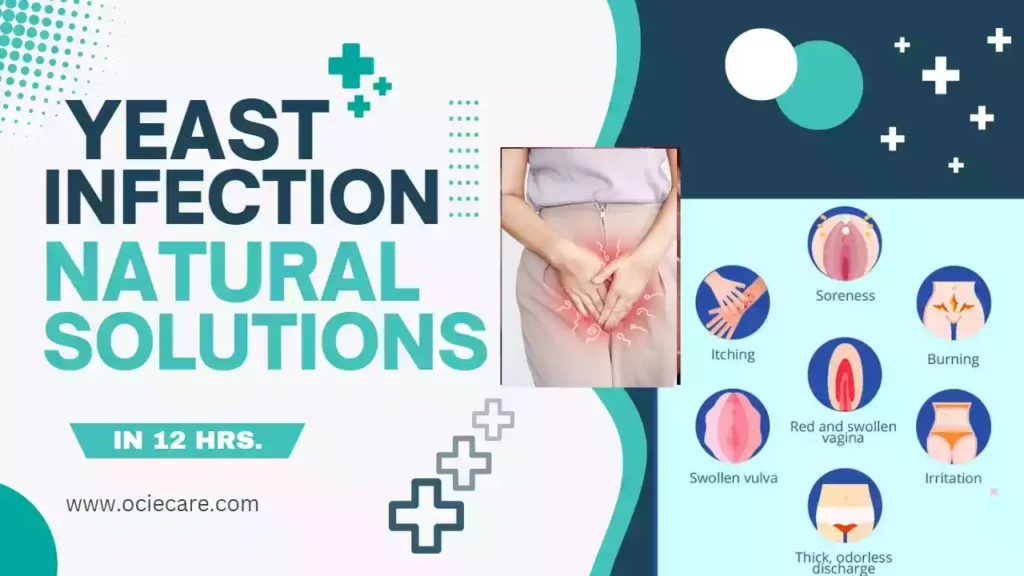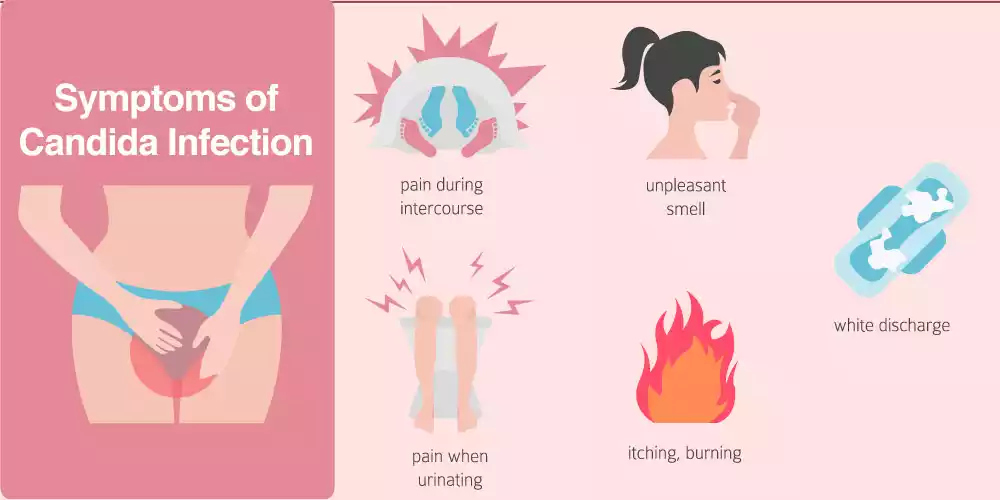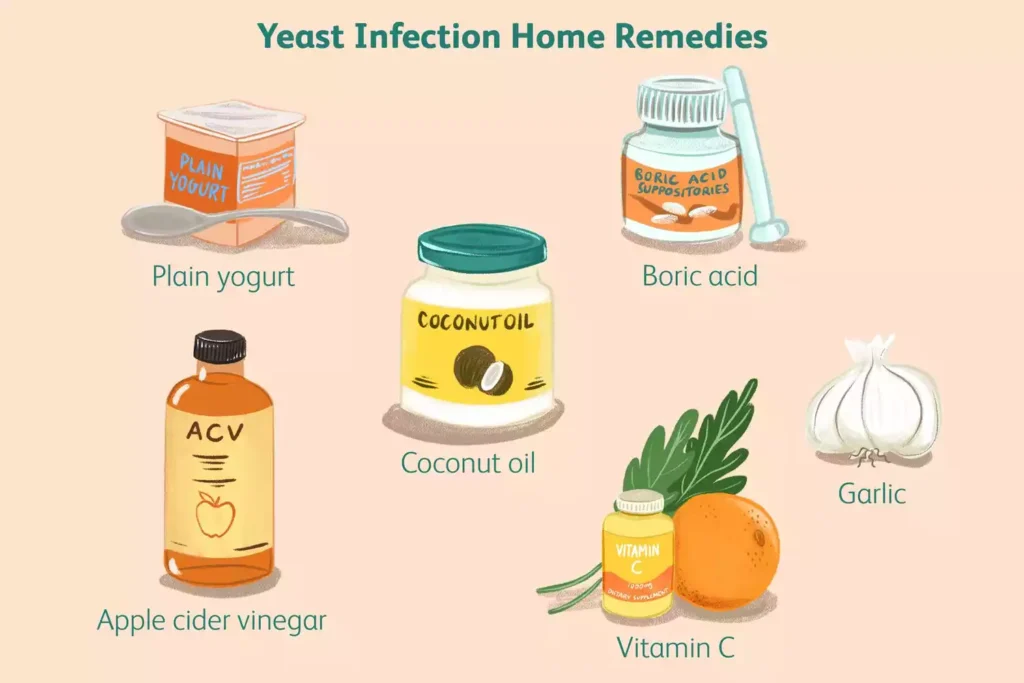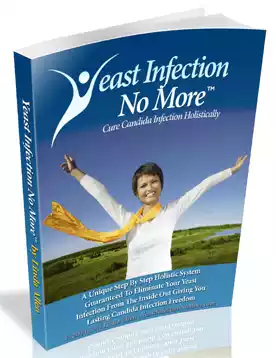Yeast infection are a common health concern that can affect individuals of all genders and ages. These infections, caused by an overgrowth of yeast in the body, can lead to uncomfortable symptoms and discomfort.
Yeast infection, also referred to as Candida, Monilia, or Thrush, is a pervasive condition that affects a significant number of individuals. Despite its high prevalence, candida infection is often overlooked or dismissed as a superficial issue that can be easily resolved with creams and antibiotics. However, the truth is that candida infections can have potentially dangerous complications.
It is crucial to understand that yeast infection is primarily an internal problem. Like many chronic conditions, it does not have a single cause, making it difficult to eliminate the infection permanently using superficial treatments. Unfortunately, many yeast infection sufferers rely on doctors, pharmacists, and over-the-counter remedies, thereby relinquishing control over their health and well-being.
In this article, we will delve into the topic of yeast infection, providing a comprehensive understanding of the condition, discussing various treatment options, and exploring natural solutions that can help alleviate the symptoms. So, let’s dive in!

Yeast Infection: 5 Steps Natural Solutions Within 12 Hrs.
Yeast infection, also known as candidiasis, occur when there is an imbalance in the body’s natural yeast population. Although yeast is present in the body, certain factors can lead to overgrowth, resulting in uncomfortable symptoms. In this article, we will explore the causes, symptoms, medical treatments, and natural solutions for yeast infection.
Bacterial Vaginosis: End In 03 Days or Less By 100%
Understanding Yeast Infection
A. What is a Yeast Infection?
A yeast infection is a common fungal infection caused by the overgrowth of Candida, a type of yeast that naturally resides in the body. The most common type of yeast infection is known as vaginal candidiasis, which affects women. However, yeast infection can also occur in other areas of the body, such as the mouth, skin, and nails.
B. Causes of Yeast Infection
Yeast infection can occur due to various factors, including:
I. Weakened immune system:
- A weakened immune system can make it easier for yeast to overgrow and cause an infection.
- For example, individuals with HIV/AIDS or those undergoing chemotherapy may have compromised immune systems, making them more susceptible to yeast infections.
II. Hormonal changes:
- Hormonal fluctuations, such as those occurring during pregnancy, menstruation, or menopause, can disrupt the natural balance of yeast in the body.
- This imbalance can lead to the development of a yeast infection.
III. Antibiotic use:
- Antibiotics are designed to kill harmful bacteria, but they can also disrupt the natural balance of bacteria and yeast in the body.
- When the healthy bacteria are reduced, yeast can overgrow and cause an infection.
- For instance, a course of antibiotics for a bacterial infection may increase the risk of developing a yeast infection.
IV. Uncontrolled diabetes:
- Uncontrolled diabetes, especially with elevated blood sugar levels, can create an environment that promotes yeast overgrowth.
- Yeast feeds on sugar, so high levels of glucose in the body can contribute to the development of a yeast infection.
V. Poor personal hygiene:
- Inadequate personal hygiene can create an environment that allows yeast to thrive.
- For example, not regularly changing out of damp clothes, especially in the genital area, can create a warm and moist environment that encourages yeast growth.
VI. High sugar intake:
- Yeast feeds on sugar, so a diet high in sugar can contribute to the overgrowth of yeast in the body.
- Excessive consumption of sugary foods and beverages can increase the risk of developing a yeast infection.
VII. Tight clothing:
- Wearing tight-fitting clothes, especially those made from non-breathable materials, can trap heat and moisture, creating an environment that promotes yeast growth.
- This is particularly relevant in the case of underwear or pants that don’t allow proper airflow.
C. Common Symptoms of Yeast Infection

The symptoms of a yeast infection can vary depending on the affected area, but some common signs include:
I. Itching and irritation:
- One of the hallmark symptoms of a yeast infection is intense itching in the affected area.
- This itching is often accompanied by irritation and discomfort.
II. Redness and swelling:
- The skin or mucous membranes affected by the yeast infection may appear red, inflamed, and swollen.
- This can be particularly noticeable in areas such as the genitals or mouth.
III. Thick, white discharge (vaginal yeast infection:
- In the case of vaginal yeast infections, a thick, white, cottage cheese-like discharge may be present.
- This discharge is typically odorless but can cause discomfort and irritation.
IV. Pain or discomfort during intercourse or urination:
- Yeast infections in the genital area can cause pain or discomfort during sexual intercourse or urination.
- The inflammation and irritation of the tissues can lead to these symptoms.
VII. Rash or patches on the skin:
- Infections that occur on the skin, such as in skin folds or beneath the breasts, can result in the development of a rash or patches.
- These areas may be itchy, red, and have an uneven texture.
Blood Sugar | Diabetes: Understanding, Treatment, and Prevention In 2023
Medical Treatment for Yeast Infection
Various medical treatment options are available to effectively manage yeast infections. Here are some common approaches:
I. Over-the-Counter Antifungal Medications
- Over-the-counter antifungal creams, ointments, and suppositories are readily available at pharmacies and can be effective in treating yeast infections.
- These products contain active ingredients, such as clotrimazole or miconazole, that help eliminate the yeast and relieve symptoms.
- They are usually applied directly to the affected area.
For example, an individual with a vaginal yeast infection can use an over-the-counter antifungal cream inserted into the vagina using an applicator. The cream helps to kill the yeast and alleviate symptoms such as itching and discharge.
II. Prescription Medications
- In cases of severe or recurring yeast infections, a healthcare provider may prescribe oral antifungal medications.
- These medications, such as fluconazole, are stronger than over-the-counter options and can effectively combat stubborn yeast infections.
- They work by inhibiting the growth of the yeast and preventing its spread throughout the body.
For instance, an individual with recurrent yeast infections that do not respond to over-the-counter treatments may be prescribed a course of oral antifungal medication to address the underlying infection.
III. Topical Creams and Suppositories
- Prescription-strength topical creams and suppositories are also available for the treatment of yeast infections.
- These medications are applied directly to the affected area, providing targeted relief.
For example, a healthcare provider may prescribe a stronger antifungal cream or suppository to address a persistent yeast infection on the skin or in the vaginal area. These prescription treatments often contain higher concentrations of antifungal agents and may be more effective in severe cases.
Natural Remedies for Yeast Infection

In addition to medical treatments, several natural remedies can help alleviate yeast infection symptoms. Here are some options to consider:
I. Probiotics
- Probiotics are beneficial bacteria that promote a healthy balance of microorganisms in the body.
- Consuming probiotic-rich foods or taking supplements can help restore the natural balance of yeast in the body, potentially reducing the risk of yeast infections.
- Probiotic foods are Kefir, Tempeh, Kimchi, Kvass, Miso, Natto, Sauerkraut, Soft and aged cheese, Green olives, Apple cider vinegar, Sourdough, etc.
II. Tea Tree Oil
- Tea tree oil possesses antifungal properties and can be used to treat yeast infections.
- Diluted tea tree oil can be applied topically to the affected area for relief.
III. Garlic
- Garlic has natural antifungal properties and can help combat yeast infections.
- Incorporating garlic into the diet or using garlic extract as a topical treatment may provide relief.
IV. Yogurt & Buttermilk,
- Yogurt & Buttermilk, containing live cultures is a natural source of probiotics.
- Consuming yogurt or applying it topically can help restore the natural balance of yeast in the body.
V. Coconut Oil
- Coconut oil exhibits antifungal properties and can be used as a topical treatment for yeast infections.
- Applying coconut oil to the affected area may help alleviate symptoms.
Lifestyle Changes to Prevent Yeast Infection
Making certain lifestyle changes can help prevent yeast infections from recurring. Here are some tips to consider:
I. Personal Hygiene
- Maintain good personal hygiene by regularly washing and drying the affected areas.
- Avoid using scented soaps or douches, as they can disrupt the natural balance of yeast.
II. Clothing Choices
- Wear breathable cotton underwear and avoid tight-fitting clothing that can create a warm and moist environment, promoting the growth of yeast.
III. Diet and Nutrition
- Limiting the consumption of sugary foods and refined carbohydrates can help reduce the risk of yeast overgrowth.
- Instead, opt for a balanced diet rich in whole grains, lean proteins, and fresh fruits and vegetables.
IV. Managing Stress Levels
- Stress can weaken the immune system and contribute to yeast infections. Incorporating stress management techniques such as meditation, exercise, or engaging in hobbies can help maintain a healthy immune system.
When to Seek Medical Attention
Most yeast infections can be effectively managed with over-the-counter treatments or natural remedies. However, it is important to consult a healthcare professional if:
- The symptoms persist or worsen after treatment
- You experience recurring yeast infections
- You are pregnant or breastfeeding
- You have underlying health conditions
Uterine Fibroids: The Natural Solution In 21 Days

Are You Suffering From Any of the Following Emotional or Physical Symptoms?
- Itching or Burning Sensation In Your Intimate Parts
- Vaginal Odor Or Vaginal Discharge
- Leaky Gut Syndrome
- Arthritis
- Painful Urination or Other Urinary Disorders
- Painful Sex
- Sexual Dysfunction or Impotence
- Depression or Mood Swings
- Chronic Rashes
- Constant Tiredness or Fatigue
- Irritability
- Joint Pain or Swelling
- PMS
- Digestive Pain
- Muscle Aches
- Short Attention Span
- Hand Pain
- Hip and Knee Pain
- Headaches or Constant Migraines
- Constipation
- Unexplainable Lack of Energy
- Acne or Rosacea
- Respiratory Infections
- Bloating or IBS
- Hypoglycemia
- Menstrual Pain
- Skin Lesions
- Shortness of Breath
- Food Allergies
- Learning and Memory Problems
- Increased Craving For Simple Carbohydrates
- Eczema
- Jumpy Legs
- Blurred Vision Or Brain Fog
- Oral Yeast Infection (Oral Thrush)
- Male Yeast Infection
- Yeast Infections in Your Toe or Fingernails
- Unexplainable Feeling of “Not being yourself”
If you have experienced a yeast infection, you are likely familiar with the confusion and frustration resulting from conflicting advice and information overload. Obtaining honest and accurate information about vaginal yeast infections or other forms of candida infections has become increasingly challenging.
Many individuals, including myself, have fallen prey to misleading treatment programs and ineffective anti-yeast infection products, wasting both time and money.
Becoming a Knowledgeable Consumer
To navigate through the sea of misinformation and conflicting recommendations surrounding yeast infections, it is essential to become an informed and discerning consumer.
Thankfully, there are alternative, safe, and natural health practices available that can effectively alleviate the symptoms and address the underlying causes of candida infections. These approaches offer a holistic perspective and can lead to permanent eradication of the infection, regardless of its type, location, or severity.
Taking Control of Your Candida Infection
To successfully overcome candida infection, it is crucial to gain a deeper understanding of its root causes and recognize the associated symptoms. Self-testing and accurate diagnosis are vital steps in this process. Additionally, learning about the dietary principles necessary to create an environment inhospitable to candida overgrowth and exploring complementary treatments are essential for combating the negative effects and complications of yeast infections.
By empowering yourself with knowledge and taking proactive measures, you can regain control over your candida infection and facilitate your body’s natural healing process. Doing so will not only alleviate the pain, annoyance, and frustration associated with this condition but also boost your overall energy, vitality, and well-being. Improved digestion, enhanced vision, and healthier hair, skin, and nails are among the additional benefits you can expect.
Holistic System In Existence That Will Show You How To Naturally Treat Candida Infections And Regain Your Natural Inner Balance, Using A Unique 5-Step Method No One Else Will Tell You About…”
- Treat Your Candida Yeast Infection Quickly and Naturally Within 2 Months
- Gain Complete Relief In As Little As 12 Hours!
- Treat Vaginal, Male, and Oral Yeast Infections
- Tackle Digestive Disorders and Allergies
- Treat Fatigue and Muscle Aches
- Tackle Migraines, Mood Swings, and Brain Fog
- Treat Skin Related Yeast Infections
- Treat The Rashes, Burning, Itching, and Discomfort
- Regain Lost Energy and Vitality
- Save 1000’s Dollars On Drugs and Doctor Visits
- Improve The Quality Of Your Life Dramatically!
- Discover How She’s Treated Her Chronic Candida
- Yeast Infection and Taught Thousands Of People Worldwide
Be Free From All Types of Yeast Infections:
- Without Resorting To Drugs
- Without Creams Or Lotions
- Even If You Have a Very Severe Candida Infection
- Faster Than You Ever Thought Possible!

This article draws from the insights of Linda Allen, author of the book “Yeast Infection No More.” Linda, a renowned researcher, nutritionist, and health consultant, has dedicated her life to developing the ultimate holistic solution for yeast infections.
Her program guarantees to permanently cure the root cause of candida and significantly enhance your overall quality of life—naturally and without relying on prescription medications or experiencing any side effects. For more information, please visit her website.
Affiliate Disclosure:
- This page contains affiliate products. When you click on links to purchase weight gain supplements, we may earn a commission at no additional cost to you. Your support helps us continue providing valuable content. Thank you for your understanding and trust in our recommendations.
Conclusion
Yeast infections can be uncomfortable and disruptive, but with proper treatment and preventive measures, they can be effectively managed. In this article, we have explored the causes, symptoms, medical treatments, and natural solutions for yeast infections. Remember to consult a healthcare professional for personalized advice, and consider incorporating natural remedies and lifestyle changes to minimize the risk of recurrence.
In conclusion, yeast infections are a common health issue that can be effectively managed with medical treatments and natural remedies. By understanding the causes, symptoms, and available options for treatment, individuals can take proactive steps to alleviate symptoms and reduce the risk of recurrence. Remember to consult with a healthcare professional for personalized advice and guidance.
FAQs
Q. Can men get yeast infections?
A. Yes, although less common, men can also develop yeast infections, especially in the genital area.
Q. Are yeast infections sexually transmitted?
A. Yeast infections are not considered sexually transmitted infections, but sexual activity can increase the risk of developing an infection.
Q. Can I use natural remedies alongside medical treatments?
A. It is best to consult a healthcare professional before using natural remedies alongside medical treatments to ensure compatibility and effectiveness.
Q. How long does it take to treat a yeast infection?
A. The duration of treatment can vary depending on the severity of the infection and the chosen treatment method. It is important to follow the recommended treatment course.
Q. Are there any lifestyle habits that can increase the risk of yeast infections?
A. Yes, certain habits such as wearing damp clothes for prolonged periods, using scented hygiene products, or having a diet high in sugar can increase the risk of yeast infections.

Can you be more specific about the content of your article? After reading it, I still have some doubts. Hope you can help me.